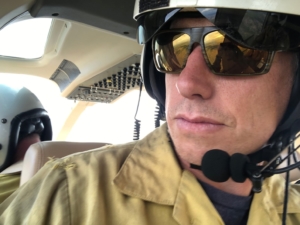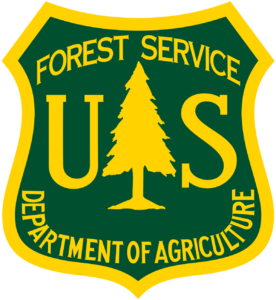Alum Takes Passion and Prowess for Science to Leadership Roles in the US Forest Service
Ian Reid grew up in the upper Willamette Valley in the town of Silverton. He didn’t know much about SOU until he attended a summer football camp at Raider Stadium the summer of 1991. He fell in love with the campus, the Siskiyous and the small-town atmosphere. It was not too far away from home but was far enough away from home!
Ian earned multiple academic scholarships at SOU and played on the rugby club team his freshman year as he began to study biology with the long-term goal of going to medical school. His second year on campus, he tried out for the football team and made it as a walk-on. Academically, he blossomed in the small science classes and loved his instructors. He speaks highly of Stephen Cross and Michael Parker ’81 and their biology classes, which oftentimes focused on much of the biodiversity in the region’s outstanding natural classrooms. “Michael was a great mentor and his love of public lands really helped influence my decision to become a land manager in my career,” he said. “Our group projects and biology study groups were also a lot of fun.” Reid also credits his enrollment in the Churchill Honors Scholars program at SOU with giving him a solid foundation in ethics, diversity and inclusion, including learning about underserved groups.
Ian became a three-year starter in football and earned all-Columbia Football Association honors his senior year while also being elected as a co-captain by his teammates. Not bad for a student-athlete who had only played one half of one season in high school. Ian was an academic all-star for SOU and he was selected to the prestigious College Sports Information Directors of America Academic All-American first team his senior year. He graduated Magna Cum Laude in 1997 with his bachelor of science degree in biology.
In the summer of 1998, Ian secured seasonal work with the Oregon Department of Fish and Wildlife then decided to return to SOU as a graduate student and football coach. Then in 1999, he was hired by the US Forest Service (USFS) and served as a fisheries technician for the Ashland and Applegate Ranger Districts while he attended SOU. He earned his master’s degree in science at SOU in 2002. To stay in the fisheries career field, the USFS wanted him to pursue a more specialized fisheries science degree, which he earned at Oregon State University in 2003. After earning that degree, Ian became a permanent Fisheries Biologist for the Rogue River-Siskiyou National Forest in 2003. To keep a USFS career moving along, employees must move from time to time to enhance their careers but also share knowledge and personalities throughout the entire National Forest network. With that, Reid took temporary assignments on the Coconino (Arizona), Malheur and Umpqua National Forests over the next decade while starting a family in Talent with his wife Annie (nee Heuberger ’97 & MAT ‘99). In 2013, he accepted a District Ranger position for the North Fork John Day Ranger District in the Umatilla National Forest in Ukiah, Oregon, population 180. There, he would lead the multiple use mandate of Congress for four years in a district with almost 500,000 acres of public land, managing for recreation, watershed, timber, mining, grazing and wilderness values. “The biggest multiple use aspects of the North Fork John Day District are timber, grazing and mining because of the geology of the region and its remote nature away from large population centers. This was good for me to see the diversity that our forests offer to the American people and our Treaty Tribes and how best to manage those lands for the greatest good, for the greatest number, for the long term,” he said.
In 2017, Ian earned the District Ranger position in the Sisters Ranger District of the Deschutes National Forest in Oregon. Of the 325,000 acres in the district, over one half have burned in the past 17 years. The district has three wilderness areas; Three Sisters, Mt. Washington and Mt. Jefferson and two Wild and Scenic-designated streams, the Metolius River and Whychus Creek. With the proximity of the district to 200,000 plus people in central Oregon, the challenges ratchet up as well. “This is a district where recreation is the primary use and we are very visible to the public. Central Oregon is known for its cooperative nature of getting work done and its intelligent and engaged elected officials, community leaders and the public at large. The Deschutes National Forest receives close to four million visitors annually. I am very proud of the work we have done here to reduce fuels in the wildland-urban interface and our thinning and prescribed fire projects in a region that has a lot of summer heat and high winds,” he said. “The process here is ongoing and it’s never complete. We have to stay diligent in our mission and make certain that we continue to communicate with and educate the public about their lands.”
Learn more: Deschutes National Forest




